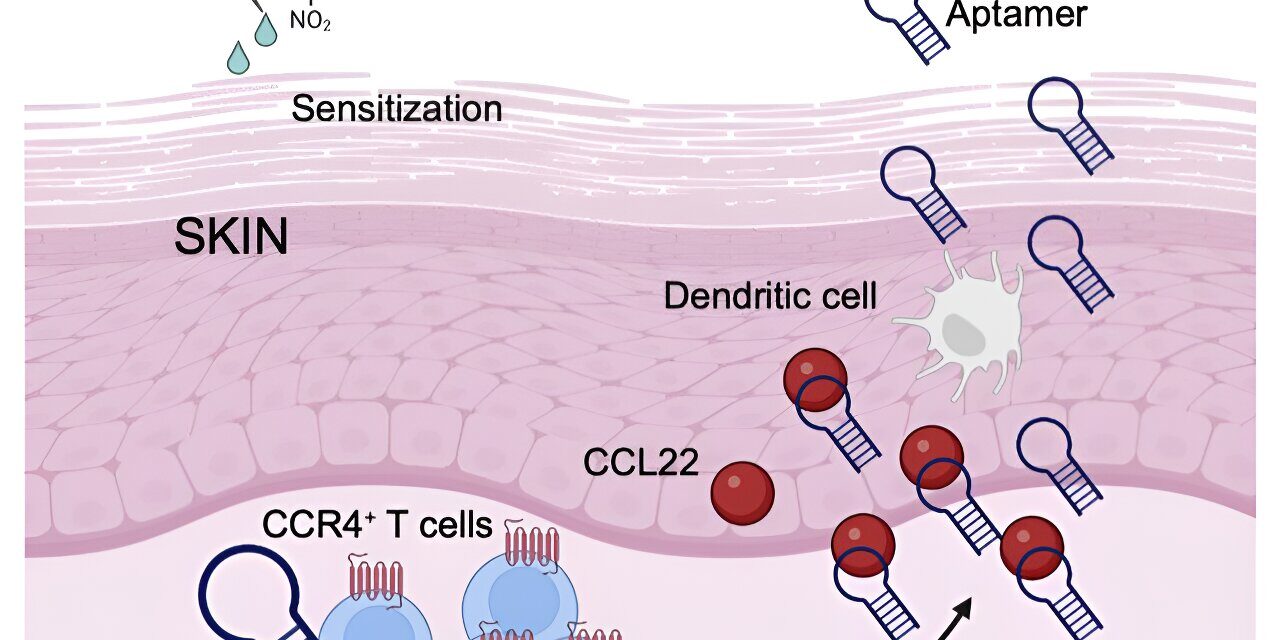University of Bonn researchers have developed an innovative treatment for allergic contact dermatitis using DNA molecules.
In a groundbreaking study, researchers at the University of Bonn have isolated a DNA molecule, or aptamer, that effectively combats allergic contact dermatitis in mice. This novel approach involves an aptamer that binds to specific immune system messenger substances, neutralizing their effect. Remarkably, the active ingredient is effective even when applied topically in the form of an ointment.
The findings, published in the journal Molecular Therapy – Nucleic Acids, suggest potential applications beyond allergic contact dermatitis, hinting at new treatments for various skin conditions.
Understanding Aptamers and Their Potential
DNA is a complex molecule composed of sequences of elements that store information, akin to letters forming words in a sentence. In chromosomes, DNA exists as two parallel strands with adhesive surfaces facing each other, resembling a mini Velcro fastening. Aptamers, however, are single-stranded DNA molecules. Their unique structure allows them to bind to other molecules and alter their function, making them valuable in active ingredient research.
“Today, it is relatively easy to produce huge libraries of aptamers with randomly differing sequences,” explains Prof. Dr. Günter Mayer from the LIMES Institute at the University of Bonn. “These libraries contain millions more potential active ingredients than there are people alive on Earth.”
Targeting Immune Proteins with Aptamers
Researchers aimed to inhibit a specific target structure using aptamers as “fishing hooks.” They isolated aptamers that adhere to the immune protein CCL22, a chemokine controlling cell migration in the body. When immune cells detect bacterial or viral elements, they release chemokines like CCL22 to summon defense forces. In allergic contact dermatitis, allergens such as nickel modify the body’s proteins, triggering an immune response and releasing CCL22. This chemokine attracts T cells to the site, causing an allergic reaction.
“We isolated aptamers that bind to CCL22, then chemically modified and optimized them,” says Mayer. By blocking CCL22, the aptamers prevented T cells from detecting the attractant, reducing the allergic skin reaction.
Success in Mice and Future Prospects
The team applied the CCL22-binding aptamer to mice in the form of an ointment, effectively blocking the chemokine and mitigating the allergic response. “This is the first time we’ve shown that aptamers can be administered topically,” Mayer notes.
The researchers, including lead authors Anna Jonczyk and Marlene Gottschalk, were surprised and excited by the results. Their success paves the way for exploring the therapeutic potential of aptamer creams for other skin conditions, such as atopic dermatitis and even malignant melanoma.
However, Prof. Dr. Irmgard Förster emphasizes caution: “Our results so far only apply to mice. It remains to be seen whether the approach will be effective in humans.”
Future Research Directions
The University of Bonn team aims to investigate the broader applications of aptamer creams for treating various skin conditions. Their groundbreaking research holds promise for developing new, effective treatments for allergic contact dermatitis and potentially other dermatological conditions, revolutionizing skincare and allergy treatment.
For more information, see the published study: Anna Jonczyk et al, Topical application of a CCL22-binding aptamer suppresses contact allergy, Molecular Therapy – Nucleic Acids (2024). DOI: 10.1016/j.omtn.2024.102254.












